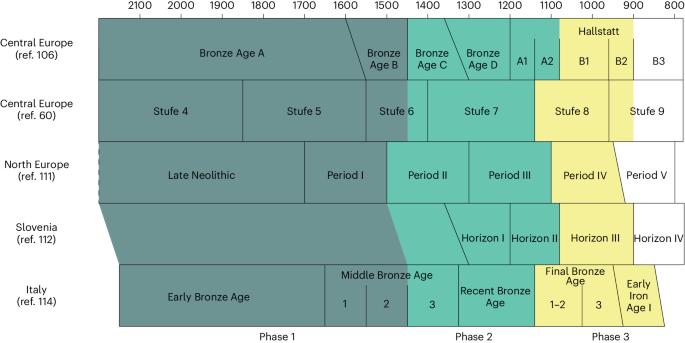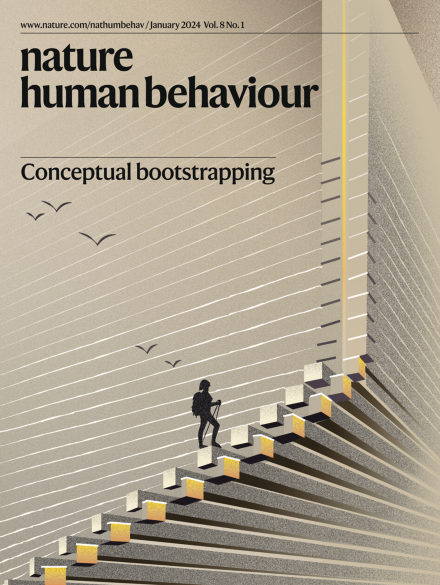Consumption patterns in prehistoric Europe are consistent with modern economic behaviour
IF 21.4
1区 心理学
Q1 MULTIDISCIPLINARY SCIENCES
引用次数: 0
Abstract
Have humans always sold and purchased things? This seemingly trivial question exposes one of the most conspicuous blind spots in our understanding of cultural evolution: the emergence of what we perceive today as ‘modern’ economic behaviour. Here we test the hypothesis that consumption patterns in prehistoric Europe (around 2300–800 bce) can be explained by standard economic theory, predicting that everyday expenses are log-normally distributed and correlated to supply, demand and income. On the basis of a large database of metal objects spanning northern and southern Europe (n = 23,711), we identify metal fragments as money, address them as proxies of consumption and observe that, starting around 1500 bce, their mass values become log-normally distributed. We simulate two alternative scenarios and show that: (1) random behaviour cannot produce the distributions observed in the archaeological data and (2) modern economic behaviour provides the best-fitting model for prehistoric consumption. Prehistoric economic behaviour in Europe fits well with modern economic theory, based on a large database of metal objects from across Europe.


史前欧洲的消费模式与现代经济行为一致。
人类一直都在买卖东西吗?这个看似微不足道的问题暴露了我们对文化进化理解中最明显的盲点之一:我们今天所认为的 "现代 "经济行为的出现。史前欧洲(约公元前 2300-800 年)的消费模式可以用标准的经济理论来解释,我们在此对这一假设进行了检验,标准的经济理论预测日常开支呈对数正态分布,并与供求和收入相关。在一个横跨北欧和南欧的大型金属物品数据库(n = 23,711)的基础上,我们将金属碎片识别为货币,将它们作为消费的替代物,并观察到从公元前 1500 年左右开始,它们的质量值变成了对数正态分布。我们模拟了两种不同的情况,结果表明(1) 随机行为不可能产生考古数据中观察到的分布;(2) 现代经济行为为史前消费提供了最佳拟合模型。
本文章由计算机程序翻译,如有差异,请以英文原文为准。
求助全文
约1分钟内获得全文
求助全文
来源期刊

Nature Human Behaviour
Psychology-Social Psychology
CiteScore
36.80
自引率
1.00%
发文量
227
期刊介绍:
Nature Human Behaviour is a journal that focuses on publishing research of outstanding significance into any aspect of human behavior.The research can cover various areas such as psychological, biological, and social bases of human behavior.It also includes the study of origins, development, and disorders related to human behavior.The primary aim of the journal is to increase the visibility of research in the field and enhance its societal reach and impact.
 求助内容:
求助内容: 应助结果提醒方式:
应助结果提醒方式:


